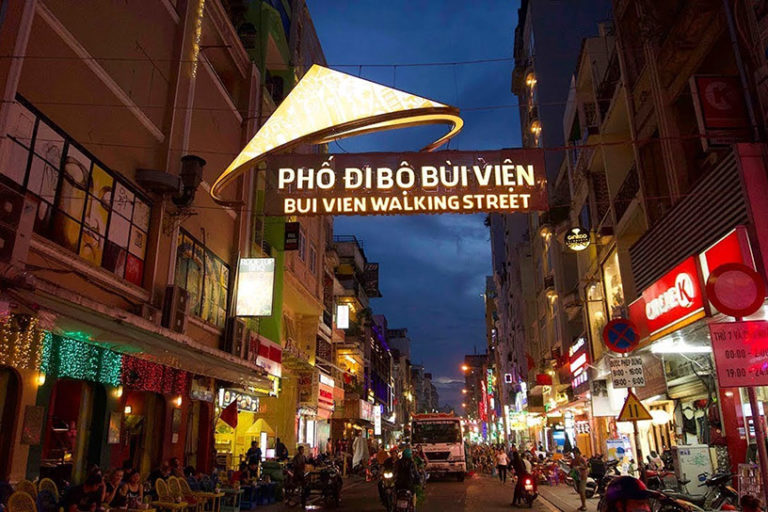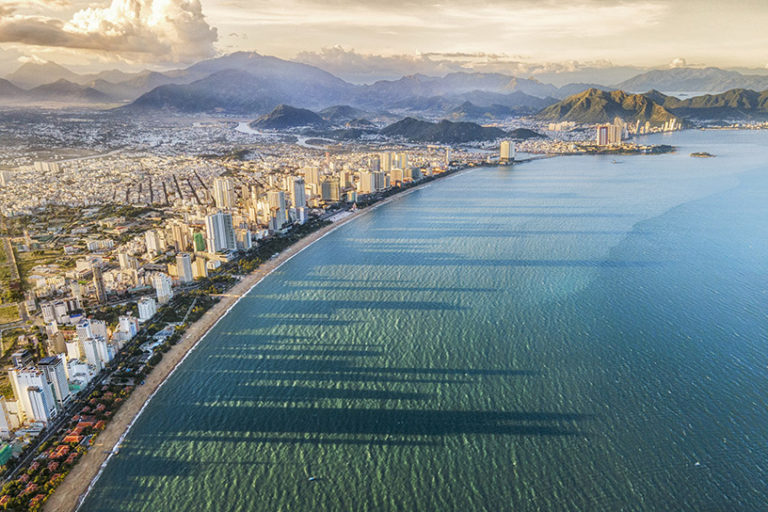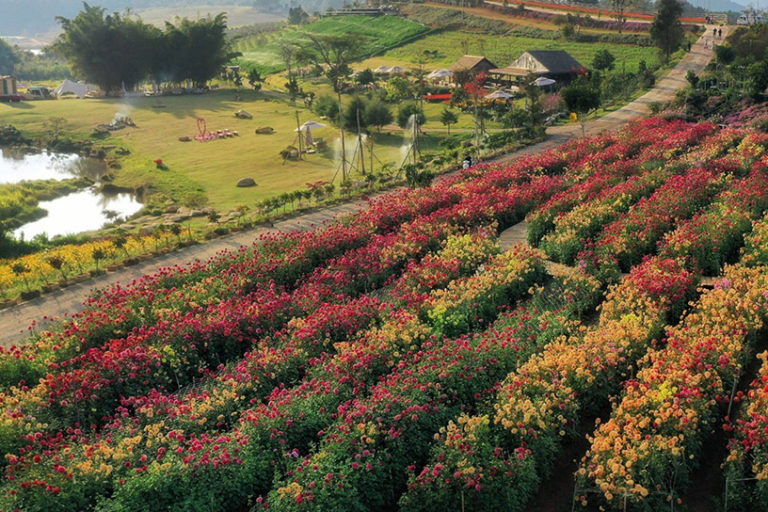24/7 Support: +84 903445750
My Son Sanctuary, Quang Nam: A UNESCO World Heritage Site
My Son Sanctuary is an ancient complex of Cham architecture, holding immense cultural and historical significance not only for Vietnam but also for Southeast Asia. Due to its unique characteristics, My Son Sanctuary has been recognized by UNESCO as a World Heritage Site.
Overview of My Son Sanctuary – The Ancient Cham Temple Complex
The My Son Sanctuary is located in Duy Phu Commune, Duy Xuyen District, Quang Nam Province, about 70 kilometers southwest of Da Nang. This heritage site is nestled in a secluded valley, surrounded by majestic mountains, offering a quiet and serene setting. Construction of My Son began in the 4th century under King Bhadravarman (reigned from 349 to 361) and concluded in the late 13th to early 14th century during the reign of King Jaya Simhavarman III (Che Man).
My Son Sanctuary houses more than 70 temple structures, representing the historical, cultural, architectural, and artistic achievements of the Champa civilization. It is considered on par with other renowned Southeast Asian heritage sites, such as Borobudur (Indonesia), Pagan (Myanmar), and Angkor Wat (Cambodia). The complex reflects the culmination of nine centuries of cultural and artistic expression (from the 4th to the 13th century). Although heavily damaged by time and war, the remnants of My Son still play a significant role in the world’s cultural, architectural, and artistic heritage.
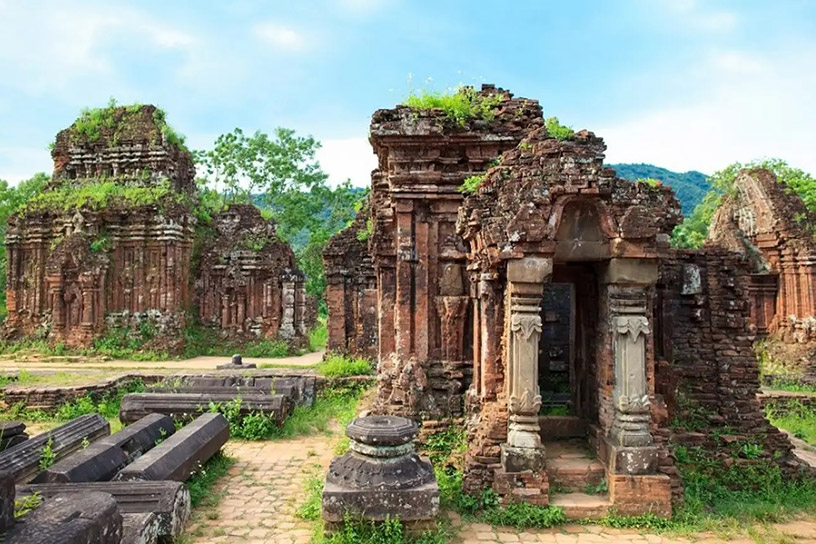
With a history of continuous development over many centuries, the temple towers at My Son exhibit a diverse range of architectural styles. However, they all share a common feature: their soaring height, symbolizing the grandeur and purity of Mount Meru, the dwelling place of the gods and the center of the universe. These temples are the most important structures of the Champa culture. Most were constructed with fired brick and adorned with sandstone reliefs depicting Hindu legends. The construction techniques showcase the craftsmanship of the Cham people, while the symbolic motifs and designs on the temples reflect the political and religious phases of the Champa kingdom.
In 1999, My Son Sanctuary was recognized as a UNESCO World Heritage Site. Today, it is considered a must-see destination for international visitors, often included in travel itineraries alongside Hoi An and other attractions in Quang Nam.
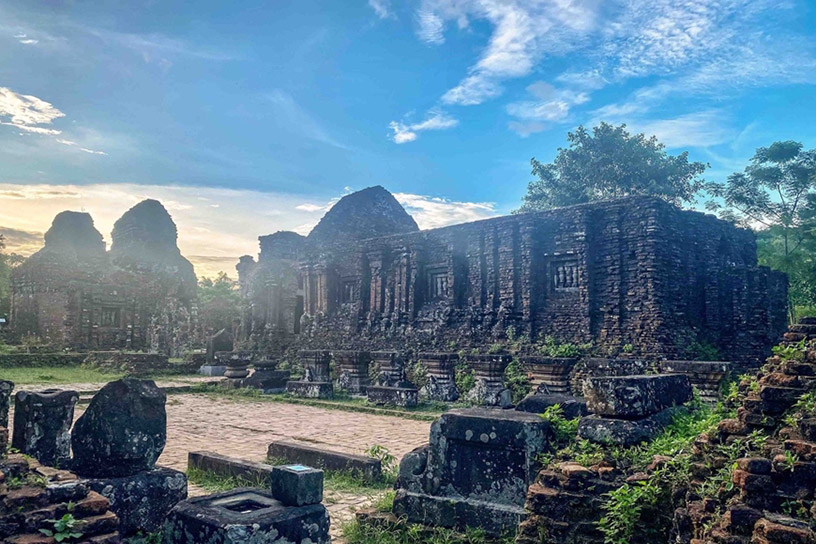
Architecture of My Son Sanctuary
Among the various architectural styles of Cham towers, the architecture of the My Son Sanctuary complex is both unique and rare. The towers are arranged in clusters, with two or more towers in each group, connected by walls, courtyards, and pathways. Each tower serves a distinct function. The clusters are centered around a main temple, which is usually surrounded by thick brick walls. The main tower typically faces east (toward the divine), though some larger towers also have west-facing entrances. In front of the main temple (Kalan) is a gateway tower (Gopura) with a small structure featuring two connected doors: one facing east and the other leading into the main temple. Adjacent to the gateway tower is a long building (Mandapa) with a tiled roof, which served as a spacious hall where pilgrims were received, offerings were made, and religious dances were performed during rituals dedicated to the gods.
Built continuously from the 4th century until the mid-13th century, the temples and towers of My Son are considered official state structures, constructed by successive kings. As such, these temples represent the finest examples of Cham architecture and art from each era, showcasing unique and innovative designs. Nearly all Cham architectural styles are present at My Son, and the temples here set the standard for identifying Cham architectural and artistic styles.
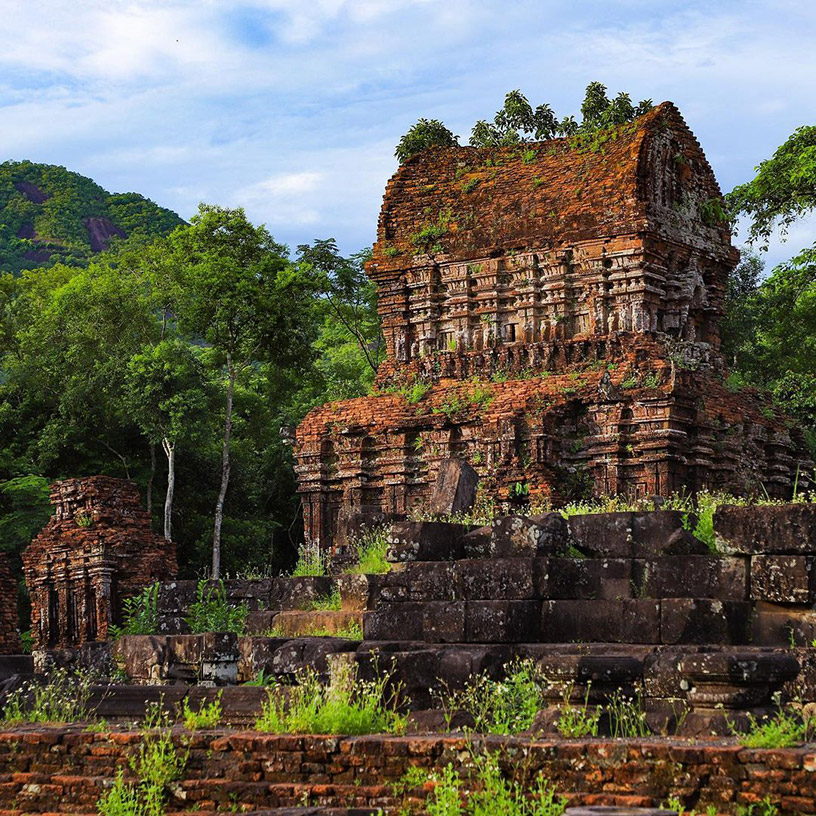
Over time, as the Cham people interacted with other civilizations, their artists selectively incorporated new cultural influences, which can be seen in the evolving architectural details of the My Son temples. As the primary religious center of the Cham kingdom for nine centuries, the temples of My Son also reflect the rise and fall of various dynasties and the historical and cultural shifts within the kingdom.
Though not as vast or imposing as other Cham sites, My Son holds an important place in Southeast Asian art, being the only site in the region with a continuous development spanning nearly nine centuries. The architecture of My Son embodies the refined craftsmanship of Cham artisans, who combined architectural techniques with decorative arts to create temples that are both majestic and mysterious.
Read more: The Night Market in Hoi An and Nighttime Tourism Activities
How to Get to My Son Sanctuary
My Son, a UNESCO World Heritage Site, is located about 70 km west of Da Nang and only around 45 km from Hoi An, making it relatively easy to reach. Here are a few transportation options to consider:
- Bus: Take bus route number 06 from Da Nang to My Son. The bus operates from 5:30 AM to around 5:00 PM daily, with buses running every 30 minutes (Schedules may vary, so it’s recommended to check before your trip).
- Motorbike: This is the most popular way to travel to My Son. The route from Da Nang to My Son is scenic, passing through rural villages and lush green rice fields. However, be mindful of traffic and ensure you have all necessary identification documents with you.
- Car: Travelers can conveniently reach My Son by car, either by taking a coach or hiring a taxi. This option saves time and allows you to enjoy the views along the way comfortably.
- Train: You can take a train to Diem Pho Station, then continue to My Son by motorbike, car, bus, or taxi.
- Airplane: If you’re flying, you can land in Da Nang and then travel to My Son by motorbike, car, bus, or taxi from there.
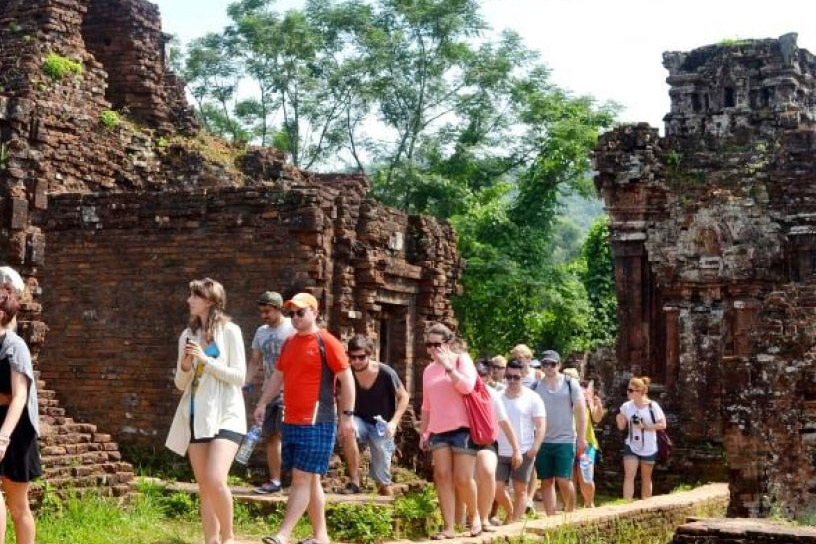
The Best Time to Explore My Son Sanctuary
The weather at My Son Sanctuary is divided into two distinct seasons:
- Dry season (January to April): This is the most ideal time to visit the UNESCO World Heritage Site. The skies are clear, with little to no rain, making it easier to move around and explore the ruins.
- Rainy season (May to December): During this time, traveling can be more challenging due to slippery roads. However, the rainy season offers a unique opportunity to witness the majestic beauty of My Son, surrounded by lush greenery.
Since My Son is located in a secluded valley and encircled by mountains, many of the paths leading into the sanctuary are dirt roads, which can become quite slippery. Visiting during the dry season will allow for smoother travel and exploration.
Entrance Fees and Opening Hours for My Son Sanctuary
- Address: Duy Phu, Duy Xuyen, Quang Nam.
- Entrance fees (subject to change): Foreign visitors: 150,000 VND; Vietnamese visitors: 100,000 VND.
- Opening hours: 6:00 AM – 5:00 PM, Monday to Sunday.
Things to Do at My Son Sanctuary
Explore the Panoramic View and Architecture of My Son Sanctuary
This is the main activity for all visitors to My Son Sanctuary. Although only 32 temple structures remain preserved today, this is more than enough for visitors to admire. The temples here were built with great craftsmanship, featuring intricate carvings and unique, elaborate details.
Another remarkable aspect that makes My Son famous is the bricks used to construct the ancient towers. These bricks were fired and cut into blocks, then carefully stacked without using any adhesive materials. Despite centuries of exposure, the structures at My Son have resisted erosion, with only minor cracks forming over time. This remains one of the greatest architectural mysteries that has yet to be fully explained.

Enjoy the Enchanting Apsara Dance
In addition to exploring the historical structures, visitors can witness the mesmerizing Apsara dance, inspired by the sandstone statues of the Apsaras. This dance is performed during important cultural events in Quang Nam Province and for tourists visiting My Son Sanctuary. You’ll feel as if you’ve stepped into the ancient Champa Kingdom, watching graceful dancers with slender, elongated fingers, full chests, and captivating curves, dressed in sparkling, vibrant costumes. The rhythmic beats of the Paranung drums and the melody of the Saranai horns further enhance the enchanting experience for visitors.
Experience the Unique Ancient 8-meter-wide Path
This ancient path leading to My Son Sanctuary was discovered by an Indian expert during the restoration of the central towers within the core of the heritage site. The ancient road is 8 meters wide, flanked by two parallel walls, and buried 1 meter beneath the ground.
According to historical records, this road led directly to the center of the sanctuary, where a grand gateway tower used for royal ceremonies was located. Only kings, royalty, and high-ranking dignitaries of ancient Champa were permitted to walk this path. The walls on both sides are finely and intricately carved. This significant discovery has further contributed to the historical value that My Son Sanctuary offers.
Immerse Yourself in the Traditional Katê Festival of the Cham People
The Katê Festival is one of the most important celebrations of the Cham people, typically held in July according to the Cham calendar. If your trip coincides with the Katê Festival, you’ll not only have the chance to explore the unique heritage of My Son but also participate in rituals for peace, processions of ceremonial robes and Katê offerings, and the traditional water procession. The festival features vibrant performances that combine traditional instruments with graceful dances by skilled performers, making it hard to take your eyes off the spectacle.
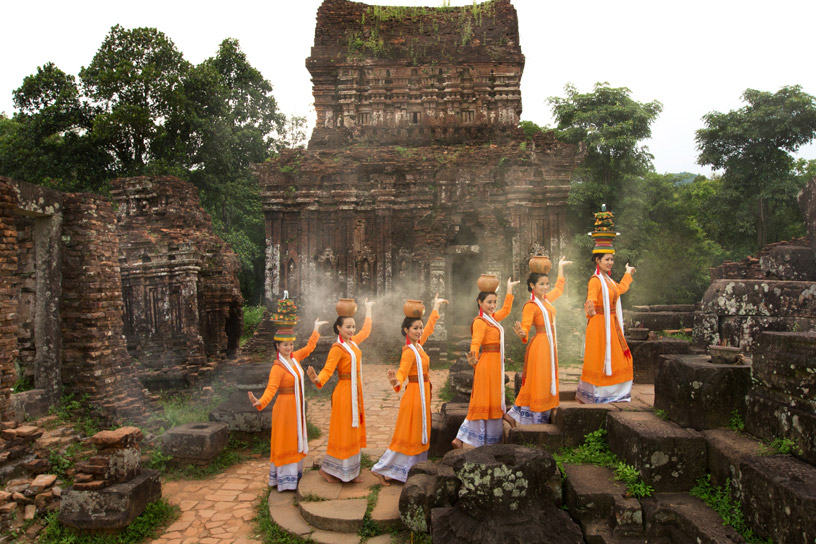
What Should You Keep in Mind When Exploring My Son Sanctuary?
Here are a few tips to ensure the best experience during your visit to My Son Sanctuary:
- In addition to its unique historical and cultural value, My Son is deeply rooted in religious significance. Therefore, it is important to dress respectfully when visiting to show respect for the site and the Cham culture. Opt for modest, appropriate clothing that aligns with the sacred atmosphere of the heritage site.
- My Son Sanctuary does not encourage visitors to perform rituals or burn incense at the site.
- You can hire a tour guide to provide in-depth information about the history of My Son.
- There is a licensed vendor on-site where you can purchase souvenirs and other items.
- Cultural performances are held at four specific times throughout the day, so be sure to plan your schedule accordingly to catch a show.
My Son Sanctuary, with its immense cultural and historical significance, is a destination you should not miss. A combined visit to both the ancient town of Hoi An and My Son Sanctuary would make for a fantastic trip. With the information we’ve just provided, we hope you will have the most perfect visit.

